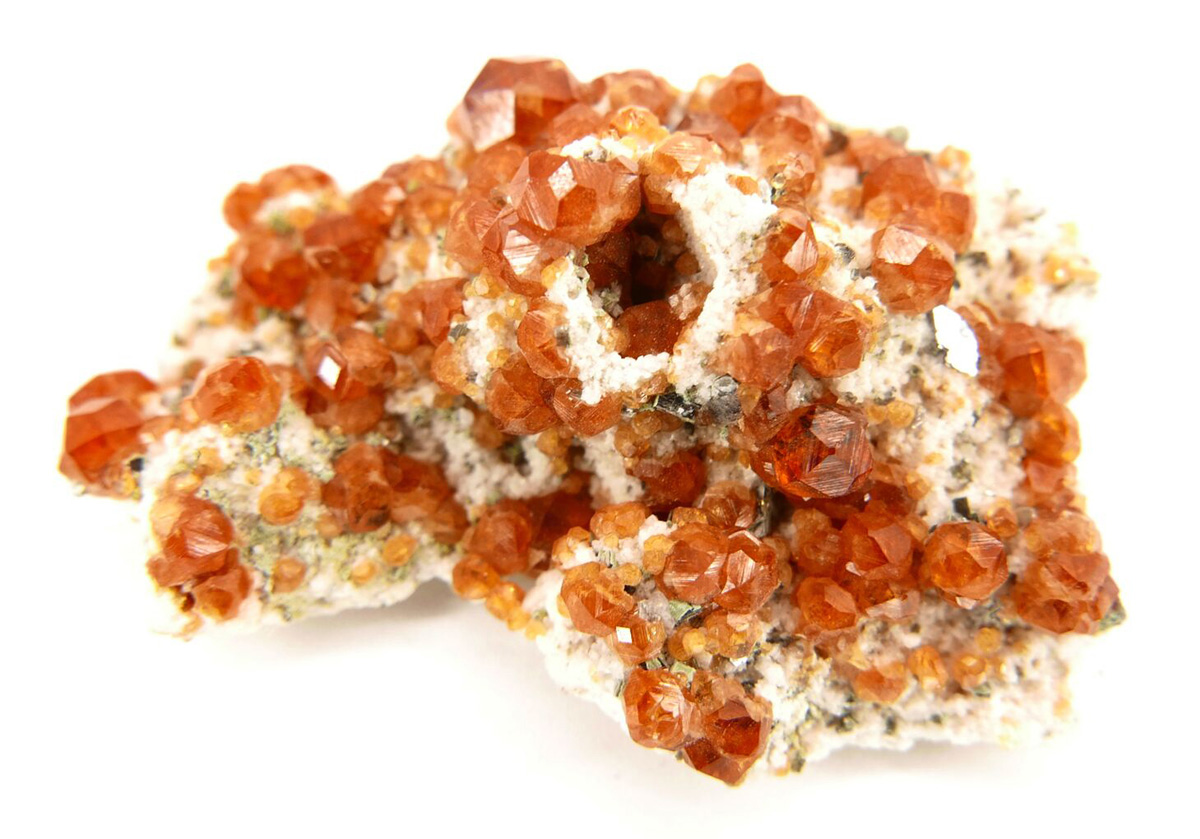
PHYSICAL PROPERTIES
- GROUP Silicates - nesosilicates
- COMPOSITION Ca3Al2(SiO4)3
- COLOR Brown to colorless, grey, green, yellow
- CRYSTALLINE SYSTEMCubic, isometric
- CRYSTALLINE HABIT Dodecahedral, massive
- HARDNESS 6.5 - 7
- FRACTURE Regular
- EXFOLIATION Null
- SHINE Vitreous to resinous
- STRIP White
- TRANSPARENCY From opaque to transparent
- SPECIFIC WEIGHT 3.5
- REFRACTIVE INDEX 1.73 - 1.75
MINERALOGICAL CHARACTERISTICS
The grossular belongs to the garnet, which are silicates that share a crystalline structure, with the typical isometric shape of 12 to 24 trapezoidal faces, and that are implanted or semi-implanted in aggregates compact to dense granular. They appear in imperfectly cleaved crystals, generally in metamorphic rocks.
The grossular is a calcium and aluminum silicate that normally forms by contact metamorphism in limestone and siliceous sedimentary rocks. . In its varieties it can be green, colorless, yellowish, brownish-orange or red.
It was baptized by Abraham Gottlob Werner, first as cinnamon stone and later renamed grossularite by himself, in 1808, for the color and appearance similar to the currant bunch, from the Latin, "ribes grosularia".
Deposits: Canada, Mexico, Kenya, Italy and Sri Lanka.
THERAPEUTIC PROPERTIES
In addition to the properties of garnet, grossular provides fluidity and inspires service and cooperation. On a physical level, it is said to be beneficial in cases of arthritis and rheumatism, and strengthens the kidneys, mucous membranes, and skin.


